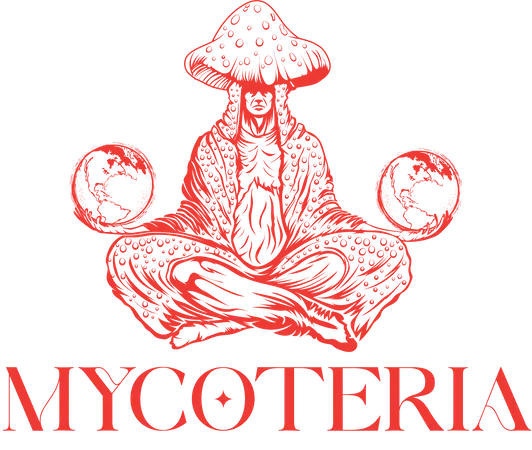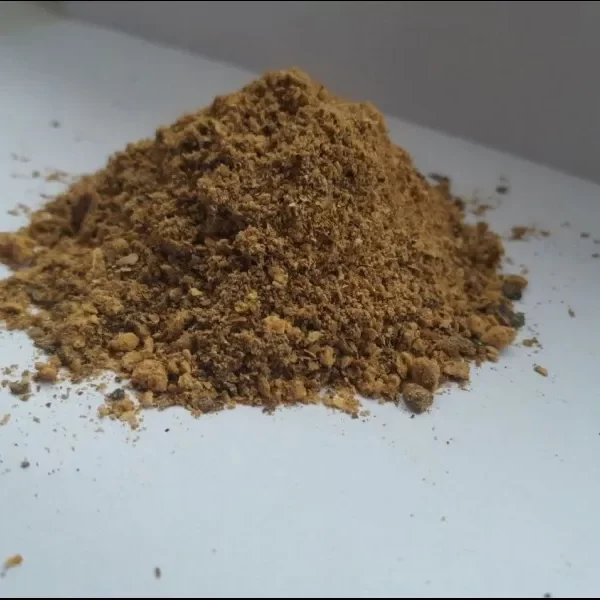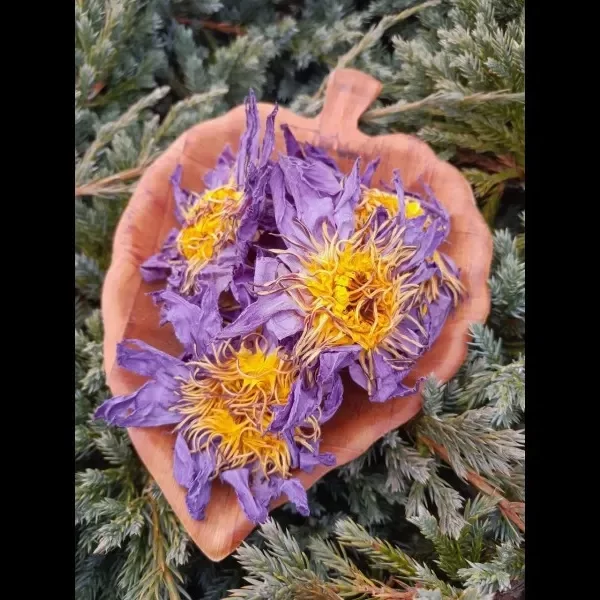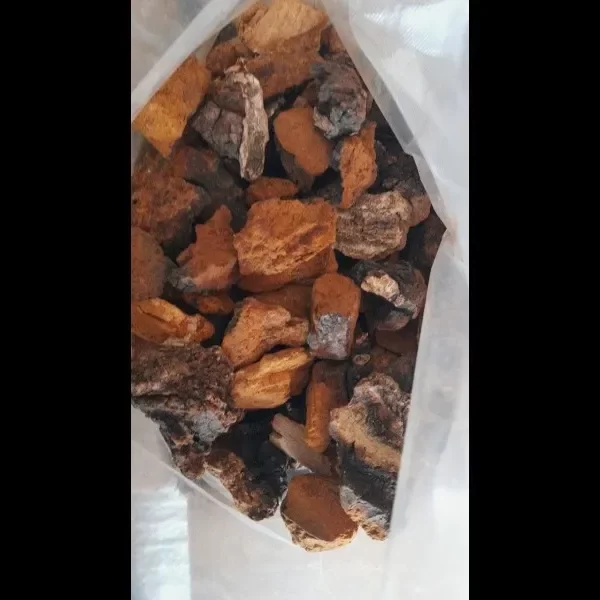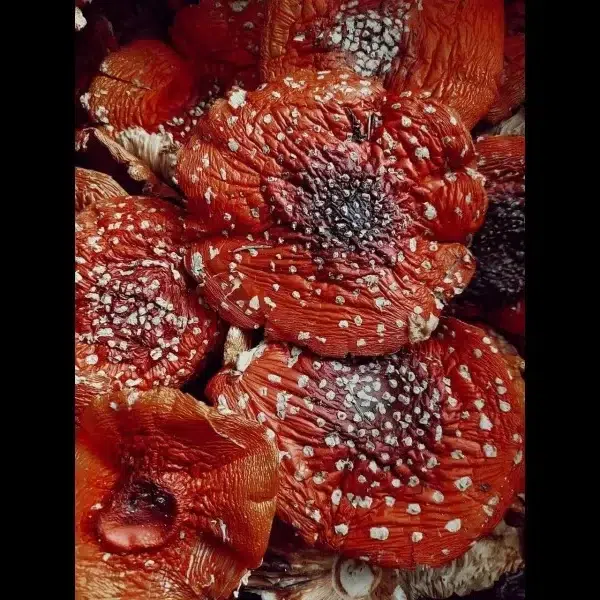Amanita Muscaria’s effects are the responses some individuals might experience after consuming this unique red and white mushroom. Amanita Muscaria contains active compounds, such as muscimol and ibotenic acid, which interact with the central nervous system, potentially leading to sensations of euphoria, dream-like experiences, and visual or sensory distortions. The mushroom’s effects vary widely based on the preparation and individual response, offering an interesting area for research into its historical and potential therapeutic uses. Let’s explore the effects and properties of Amanita Muscaria in more detail.
Disclaimer
The statements made regarding Amanita Muscaria products have not been approved by the Food and Drug Administration (FDA) as a consumable food. Amanita Muscaria products are not intended to diagnose, treat, cure, or prevent any disease. The information provided is not intended to be a substitute for professional medical advice, diagnosis, or treatment.
What are the compounds of Amanita Muscaria?
Amanita Muscaria mushrooms contain key compounds, including ibotenic acid and muscimol, which interact with neurotransmitters in the central nervous system, as well as muscarine, which is non-psychoactive. Muscimol is considered the primary compound associated with the unique experiences reported from Amanita consumption. Exploring the chemistry of these compounds provides insight into potential effects.
Muscimol
Muscimol is the main active compound in Amanita mushrooms. As a potent agonist of the GABAa receptor in the brain, it enhances GABA activity, producing effects that may alter states of awareness but are not typically classified as strongly psychedelic. This compound is primarily associated with mood regulation, potential stress relief, and sleep research.
Ibotenic Acid
Ibotenic acid, the precursor to muscimol, can be converted into muscimol through drying or heating. Ibotenic acid interacts with NMDA receptors and is the focus of research regarding learning and memory. However, due to its toxic properties, ibotenic acid is not used medicinally. Excessive amounts can lead to overstimulation, which may result in symptoms such as confusion, sleepiness, or gastrointestinal discomfort.
Muscarine
Once thought to be the psychoactive agent in Amanita Muscaria, muscarine has since been identified as contributing to some adverse effects, such as nausea or mild intoxication, without contributing to psychoactive experiences.
Effects of Amanita Muscaria Consumption
The effects of Amanita Muscaria, particularly from muscimol and ibotenic acid, vary significantly depending on dosage and individual differences. Onset typically occurs 30 to 90 minutes after ingestion, reaching its peak within 2-3 hours, with effects lasting up to 8 hours. Users report varying experiences, including:
- Stimulation or drowsiness
- Sensations of tranquility or relaxation
- Visual or auditory distortions
- Difficulty with balance or muscle control
- A sense of altered perception (objects appearing larger or smaller)
- Nausea and other gastrointestinal symptoms
Some individuals report positive, dream-like sensations, while others experience confusion or discomfort. The effects and experiences of Amanita Muscaria consumption are widely varied and can be unpredictable, underscoring the importance of research-based information and caution.
How do the effects vary between Amanita Muscaria and Amanita Pantherina?
Both Amanita Muscaria and Amanita Pantherina contain ibotenic acid and muscimol, but the concentrations of these compounds vary between the two. Amanita Muscaria generally contains more ibotenic acid, which may lead to more excitatory effects, while Amanita Pantherina tends to have a higher muscimol content, which may result in more sedative-like effects. Consequently, Amanita Muscaria may be associated with more instances of confusion and restlessness, while Amanita Pantherina may induce a calmer experience.
Amanita Muscaria vs. Psilocybin mushrooms
Though both Amanita Muscaria and psilocybin-containing mushrooms (commonly called “magic mushrooms” or “shrooms”) are considered psychoactive, they differ in active compounds and potential effects.
Check out our wide range of Amanita Musacaria products for sale here.
Active Ingredients
- Psilocybin Mushrooms: Psilocybin mushrooms contain the compound psilocybin, which is converted in the body to psilocin. Psilocin may lead to hallucinogenic effects, including altered perceptions and visualizations. These mushrooms have historically been associated with spiritual and cultural practices.
- Amanita Muscaria: The primary active compounds in Amanita Muscaria are muscimol and ibotenic acid, which interact differently in the brain compared to psilocybin. Muscimol may have sedative-like effects, while ibotenic acid may produce more excitatory responses. Thus, Amanita Muscaria’s effects are generally milder and more dream-like than the hallucinogenic experience associated with psilocybin mushrooms.
In summary, while both mushrooms may induce unique effects, the differences in active ingredients result in distinct experiences that are often explored in separate areas of research.
Potential Neurological Effects
Amanita Muscaria is often described as a “deliriant” rather than a “psychedelic” due to its interaction with different brain receptors. Unlike compounds like psilocybin, which primarily interact with serotonin receptors and are studied for their effects on mental health conditions, Amanita Muscaria’s key compounds—ibotenic acid and muscimol—primarily interact with GABA receptors in the central nervous system. This interaction may induce a calming, dream-like, or sedative state, often linked with relaxation and potential pain relief rather than intense perceptual changes.
Legal status
Psilocybin-containing mushrooms have been legalized or decriminalized in some regions but remain federally controlled in the U.S. In contrast, Amanita Muscaria is legal in most parts of the world and remains largely unregulated in the U.S., except in Louisiana, where it is restricted. However, the FDA has not approved Amanita Muscaria for human consumption.
Is Amanita Muscaria Toxic?
Amanita Muscaria contains compounds, including ibotenic acid and muscimol, which interact with the brain’s neurotransmitters. After ingestion, ibotenic acid can convert into muscimol, contributing to the mushroom’s neurological effects. Although Amanita Muscaria is considered toxic in large quantities, severe cases of poisoning are rare, and fatalities are uncommon. Traditional preparation methods, such as parboiling twice with water draining, can significantly reduce the presence of these compounds, potentially lowering toxicity.
Potential Side Effects of Amanita Muscaria
Although Amanita Muscaria has historically been regarded as toxic, some mild to moderate side effects may occur, particularly if consumed in higher amounts. Fresh Amanita Muscaria mushrooms contain a higher concentration of ibotenic acid compared to muscimol, with an approximate ibotenic acid-to-muscimol ratio of 9 to 1, which can be reduced through drying or processing. High levels of ibotenic acid may lead to side effects like sweating, nausea, muscle cramps, imbalance, involuntary movements, or temporary confusion. Modern processing techniques can increase the muscimol-to-ibotenic acid ratio to as much as 90:1, reducing the likelihood of these effects. For this reason, lab-tested and processed products, such as dried Amanitas, extracts, or gummies, are recommended.
Amanita Muscaria Toxicity
Improper consumption of Amanita Muscaria can pose health risks, with symptoms typically appearing within 30 minutes to 2 hours after ingestion. Initial symptoms may include dizziness, confusion, unsteady movement, and perceptual changes. Some individuals may experience alterations in heart rate and blood pressure, as well as changes in body temperature. In rare cases, severe poisoning may lead to coma. Medical treatment, including gastric lavage and supportive care, is advised in cases of suspected poisoning.
Accurate identification of the mushroom is essential prior to consumption. The severity of symptoms from Amanita Muscaria toxicity depends on factors such as the amount ingested and timely medical support.
In conclusion, the effects of Amanita Muscaria vary widely based on individual factors, dosage, and preparation methods. Consuming Amanita Muscaria from reputable sources is essential for safe use, as it may provide insights into the mushroom’s natural properties when processed and consumed responsibly.
For those interested in learning more about Amanita Muscaria, MyCoteria offers a variety of responsibly sourced products dried Amanita muscaria mushrooms, extract, powder, tincture, gummies, and capsules. These products are processed with quality control measures in place, making them suitable for research and educational purposes.
Continue reading
- Looking for more insights regarding Amanita Muscaria’s legality? Find all about it in our blog “Is Amanita Muscaria Legal? Worldwide Legal Status Overview”.
- Fly Agaric is not only known for its effects but also for the medical benefits. Read the blog article “What are Amanita Muscaria’s medical uses?” regarding the mushrooms benefits.
FAQ
What are the potential effects of Amanita Muscaria gummies?
Amanita Muscaria gummies generally produce similar effects to other forms of Amanita Muscaria products, as they contain the same active compounds, including muscimol. Gummies offer a more standardized form, which can make it easier to manage dosage. As with all Amanita Muscaria products, effects may vary based on individual tolerance and response.
What is a suggested dosage of Amanita Muscaria for different effects?
Dosages of Amanita Muscaria are challenging to determine precisely, as concentrations of muscimol and ibotenic acid can vary depending on where and how the mushrooms are grown. The following guidelines are general and approximate:
- Low dose: Equivalent to a small or medium cap of Amanita Muscaria
- Medium dose: Approximately one to three medium caps
- High dose: Two or more medium caps
It’s recommended to start with a lower dose and adjust based on individual tolerance and comfort level.
What is the safest way to consume Amanita Muscaria?
The safest consumption method for Amanita Muscaria is through dried products or professionally prepared forms, such as extracts and tinctures. Avoid consuming fresh Amanita Muscaria, as proper preparation like drying or boiling can help reduce the presence of certain naturally occurring compounds.
Is muscimol a psychedelic compound?
No, muscimol is not classified as a psychedelic. It acts as an agonist for GABA receptors, which may lead to sedative-hypnotic and dream-like effects. Muscimol is generally categorized as a deliriant rather than a psychedelic.
Why Amanitas are also called Fly Agaric?
The name “Fly Agaric” originates from a historical belief that placing Amanita mushrooms in milk could attract and kill flies.
What steps should be taken in case of potential Amanita Muscaria poisoning?
If someone has ingested an excessive amount of Amanita Muscaria, prompt medical attention is essential. Initial symptoms may include confusion, dizziness, restlessness, imbalance, perceptual changes, and disorientation. Timely medical intervention can help manage symptoms effectively.
Resources
- “The Deceptive Mushroom: Accidental Amanita muscaria Poisoning”(2021).
- A Method to Quantify Drosophila Behavioral Activities Induced by GABAA Agonist Muscimol (2021)
- Reasons, Form of Ingestion and Side Effects Associated with Consumption of Amanita muscaria (2023)
